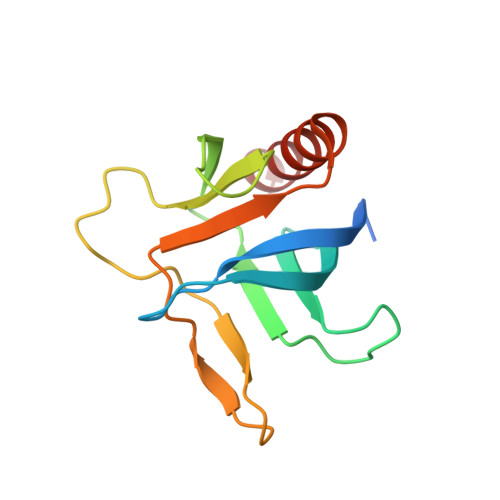Structural determinants of phosphoinositide selectivity in splice variants of Grp1 family PH domains
Cronin, T.C., DiNitto, J.P., Czech, M.P., Lambright, D.G.(2004) EMBO J 23: 3711-3720
- PubMed: 15359279
- DOI: https://doi.org/10.1038/sj.emboj.7600388
- Primary Citation of Related Structures:
1U27, 1U29, 1U2B - PubMed Abstract:
The pleckstrin homology (PH) domains of the homologous proteins Grp1 (general receptor for phosphoinositides), ARNO (Arf nucleotide binding site opener), and Cytohesin-1 bind phosphatidylinositol (PtdIns) 3,4,5-trisphosphate with unusually high selectivity. Remarkably, splice variants that differ only by the insertion of a single glycine residue in the beta1/beta2 loop exhibit dual specificity for PtdIns(3,4,5)P(3) and PtdIns(4,5)P(2). The structural basis for this dramatic specificity switch is not apparent from the known modes of phosphoinositide recognition. Here, we report crystal structures for dual specificity variants of the Grp1 and ARNO PH domains in either the unliganded form or in complex with the head groups of PtdIns(4,5)P(2) and PtdIns(3,4,5)P(3). Loss of contacts with the beta1/beta2 loop with no significant change in head group orientation accounts for the significant decrease in PtdIns(3,4,5)P(3) affinity observed for the dual specificity variants. Conversely, a small increase rather than decrease in affinity for PtdIns(4,5)P(2) is explained by a novel binding mode, in which the glycine insertion alleviates unfavorable interactions with the beta1/beta2 loop. These observations are supported by a systematic mutational analysis of the determinants of phosphoinositide recognition.
Organizational Affiliation:
Program in Molecular Medicine and Department of Biochemistry and Molecular Pharmacology, University of Massachusetts Medical School, Worcester, MA, USA.















